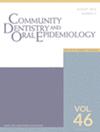Testing Dental Anxiety and Self-Care Behaviours as Mediators of the Association Between Executive Functioning and Oral Health Among Young Adults
Abstract
Background
Increased support for oral health during young adulthood is needed to address trends in oral disease over the life course. Executive functioning (EF) may play a role in supporting oral health but has received little attention. EF represents the capacity to control cognitive information, feelings and behaviour. The current study aimed to explore the association between EF and oral health among young adults and investigate potential mediators.
Methods
Young adults aged 18–30 years were recruited from five universities within Norway to take part in a cross-sectional digital survey. Participants self-reported EF, toothbrushing, flossing, dental fear and anxiety (DFA), and provided ratings on two measures of oral health: self-rated oral health (SROH) and self-reported oral health-related quality of life (OHRQoL). Separate analyses were conducted for each outcome. Linear regression was used to test the association between EF and oral health, and whether toothbrushing, flossing, or DFA mediated this effect.
Results
Data from 344 participants were analysed. Average SROH was quite good (M = 4.13), several participants (60.5%) reported some impact on OHRQoL. In the SROH model, EF difficulties directly predicted oral health (β = −0.26), and DFA mediated the relationship (ab = −0.03, p < 0.05). In the OHRQoL model, EF difficulties again predicted performances impacted (β = 0.27), and DFA mediated the relationship (ab = 0.04, p < 0.05).
Conclusion
EF is related to oral health outcomes among young adults and the relationship is mediated by DFA. Studies are encouraged to continue exploring these relationships, with longitudinal studies needed to provide more insight into the potential role of EF as a protective factor for the development of DFA and oral health problems.

 求助内容:
求助内容: 应助结果提醒方式:
应助结果提醒方式:


